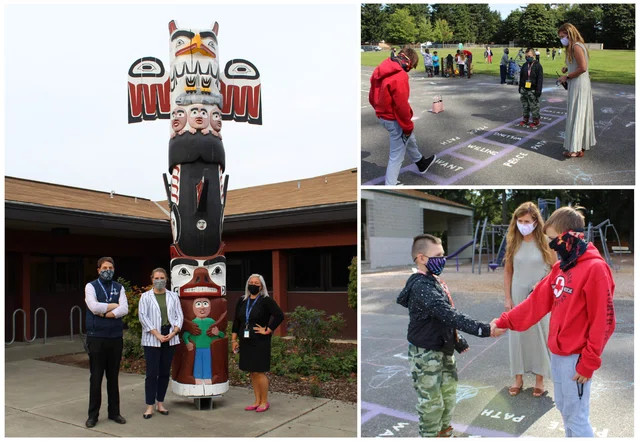
Restorative Practices
The “Secret Sauce” for Changing Behavior for the Better
Evaluation Criteria: Creating a Culture, Ensuring School Safety, Improving Instruction, Closing the Gap
Kirsten Rue
Director of Student Achievement, North Thurston PS
In the North Thurston Public Schools, we are taking steps to build the capacity of our teachers and leaders to systematically design opportunities for all students to be educated in inclusive settings.
As part of this work, we are weaving restorative practices into our organization in very intentional ways. Restorative practices, at their core, are designed to build and restore relationships. Instead of punitive responses to challenging behavior, a restorative approach promotes the power of relationships and community building as the “secret sauce” for changing behavior for the better. During this school year, I’ll be collaborating with principals across our district to share a series of stories with AWSP’s membership of our journey toward building caring climates in our schools that are grounded in respect, responsibility, and repair of harm.
Last spring, four NTPS schools engaged in restorative practices training with “Collaborative Learning Solutions” (CLS). CLS offers these trainings in partnership with OSPI and the Center for Strengthening the Teaching Profession as part of the Washington Inclusionary Practices Project. Schools and districts can apply and access their training and support for free.
What has made this training so special is that CLS trains two staff members from each building to, in turn, become “trainers” of restorative practices. In this way, we can build grassroots momentum and sustainability. These staff members are trained to provide ongoing support within their own buildings and will be co-facilitating with CLS trainers this October and December to deliver restorative practices training to four more schools in our district. Those schools will also identify staff members who will become trainers, and our ability to grow and sustain the work will deepen.
Restorative practices, at their core, are designed to build and restore relationships. Instead of punitive responses to challenging behavior, a restorative approach promotes the power of relationships and community building as the ‘secret sauce’ for changing behavior for the better.
As school has started, our principals and teacher leaders have been systematically folding restorative practices into their existing PBIS systems. Our journey with restorative practices is beginning with the committed work of North Thurston’s early adopters:
- At Nisqually Middle School, Principal David Crane and his leadership team are exploring the development of a student-led Restorative Justice Center that they plan to get up and running in the second semester.
- Many of our schools, along with our Transportation Department, have received training in the use of affective statements and restorative questions, which are foundational restorative strategies. We are printing restorative questions on the back of staff ID badges, so that they have the questions handy when working with students to address behavior challenges.
- Some of our elementary schools have embedded “Peace Paths” on their playgrounds, empowering students to apply basic problem-solving principles to help them solve their playground disputes.
- Staff members are facilitating the use of proactive circles as they deliver social emotional learning curriculum in morning meetings and advisory, as well as integrating their use into core classroom settings, to help building community and connection.
The feedback from the training we have received has been positive and there is excitement from our principals, counselors, and teachers to lead this work. As the year unfolds, I look forward to sharing our 2021-22 journey toward adopting a district-wide restorative mindset with our friends and colleagues connected to AWSP.◼
Find us on
Association of Washington School Principals
Washington Principal | Volume 1– 2021-22


